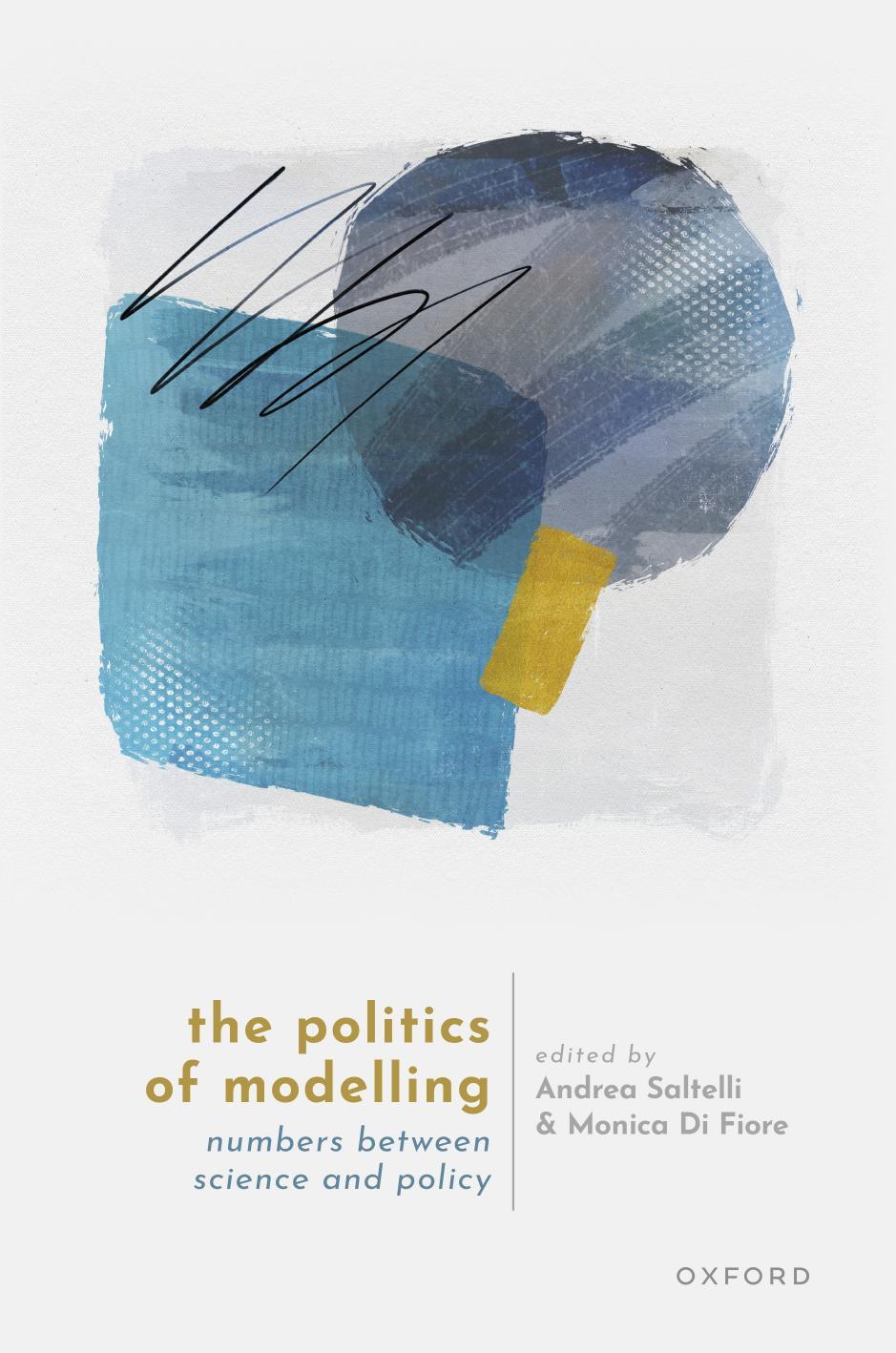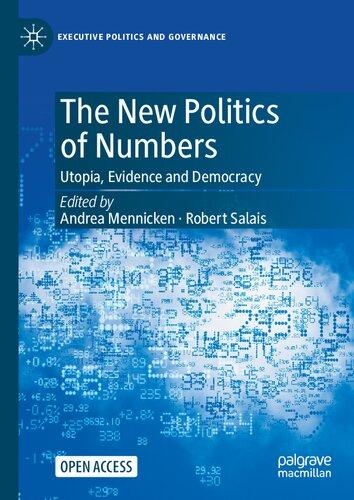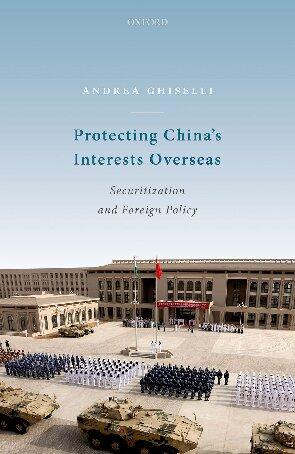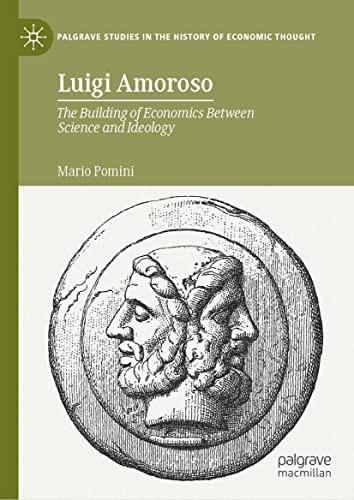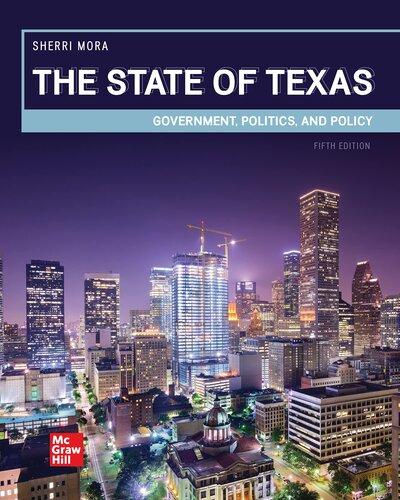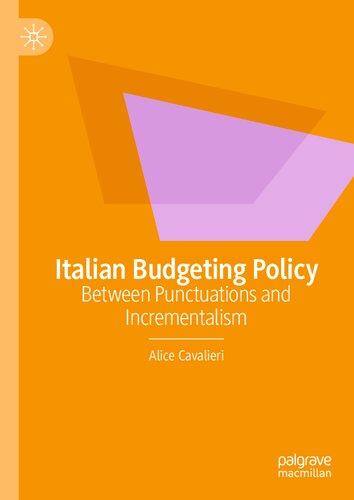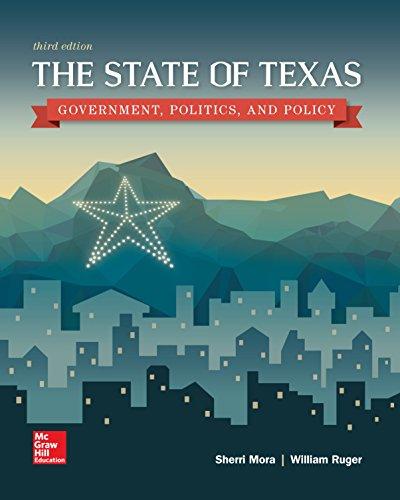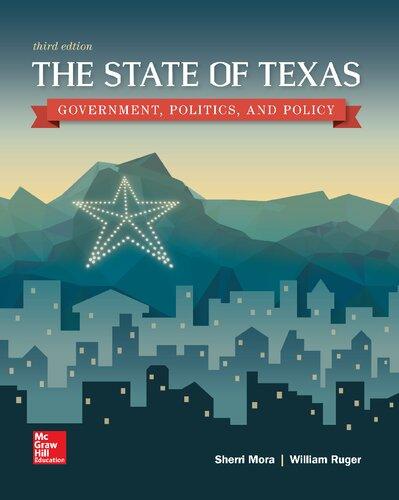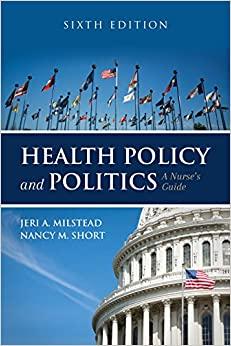The Politics of Modelling Numbers Between Science and Policy Andrea Saltelli
Visit to download the full and correct content document: https://ebookmass.com/product/the-politics-of-modelling-numbers-between-science-a nd-policy-andrea-saltelli/
More products digital (pdf, epub, mobi) instant download maybe you interests ...
The New Politics Of Numbers: Utopia, Evidence And Democracy 1st Edition Andrea Mennicken
https://ebookmass.com/product/the-new-politics-of-numbers-utopiaevidence-and-democracy-1st-edition-andrea-mennicken/
Protecting
China's
Interests Overseas: Securitization
and Foreign Policy Andrea Ghiselli
https://ebookmass.com/product/protecting-chinas-interestsoverseas-securitization-and-foreign-policy-andrea-ghiselli/
British Policy Towards Poland, 1944–1956
Andrea Mason
https://ebookmass.com/product/british-policy-towardspoland-1944-1956-andrea-mason/ Luigi Amoroso. The Building of Economics Between Science and Ideology Mario Pomini
https://ebookmass.com/product/luigi-amoroso-the-building-ofeconomics-between-science-and-ideology-mario-pomini/
The State of Texas: Government, Politics, and Policy, 5e Sherri Mora
https://ebookmass.com/product/the-state-of-texas-governmentpolitics-and-policy-5e-sherri-mora/
Italian Budgeting Policy: Between Punctuations and Incrementalism Alice Cavalieri
https://ebookmass.com/product/italian-budgeting-policy-betweenpunctuations-and-incrementalism-alice-cavalieri/
The State of Texas: Government, Politics, and Policy 3rd Edition, (Ebook PDF)
https://ebookmass.com/product/the-state-of-texas-governmentpolitics-and-policy-3rd-edition-ebook-pdf/
The State of Texas: Government, Politics, and Policy 3rd Edition Sherri Mora
https://ebookmass.com/product/the-state-of-texas-governmentpolitics-and-policy-3rd-edition-sherri-mora/
Health Policy and Politics: A Nurseu2019s Guide
https://ebookmass.com/product/health-policy-and-politics-anurses-guide/
Thestrongprinciplefortherealworldis:neveruseamodelifyoudon’tknow itslimitationsandsideeffects.Infact,youmustknowwhatitcan’tdoforyou betterthanwhatitcando.Iamgladthisprojectistakingplace:along-awaited examinationoftherole—andobligation—ofmodeling.
NassimNicholasTaleb,DistinguishedProfessorofRiskEngineering, NYUTandonSchoolofEngineering.Authorofthe five-volumeIncertoseries(TheBlackSwan)
ThePoliticsofModelling:NumbersbetweenScienceandPolicy isabreathoffresh airandamuch-neededcautionaryviewoftheever-increasingdependenceon mathematicalmodellinginever-wideningdirections.Thefiveaspectsofmodellingthatshouldbe‘minded’areasensitivesummaryoffactorsthatshouldbe consideredwhenevaluatinganymathematicalmodel.
OrrinH.Pilkey,Professor,DukeUniversity’sNicholasSchoolofthe Environment.Co-author,withLindaPilkey-Jarvis,of UselessArithmetic:WhyEnvironmentalScientistsCan’t PredicttheFuture,ColumbiaUniversityPress, Washington,DC,2009
Themethodsbywhichpowerinsinuatesitselfintomodels,andfacilitatestheir portabilityandamendments,arediverseandsometimesinsidious.Andthat’sone reasonwhytherangeofcasesexploredin ThePoliticsofModelling aresoilluminatingandwhyweneedtopayattentiontoitsauthors.[…]Goodscholarly booksusuallydooneoftwothings.Theydigintothedetailsofsomethingsothat weunderstanditbetter,seeitinanewlight.Weoftencallthisdepth.Orthey bringthingstogetherinsomecreativeamalgamationthatallowsustomakenew comparisons,toseepatternswehadn’tbeforeseen.Thiswecallbreadth.Itisrare whenabookdoesboththingswell.Thisonedoes.
WendyN.Espeland,ProfessorofSociology, NorthwesternUniversity.Author,withMichaelSauder,of EnginesofAnxiety:AcademicRankings,Reputation, andAccountability,RussellSage,NewYork,2016
AmodernRipVanWinkle,awakingfromacenturyofscientificslumbers,would bedismayedtofindsomuchemphasisonmodelsandsolittletalkofscientific lawsandfacts.AlthoughRip’sdyspepticviewofmodelsnowseemsmisguided,a callforcautionisverymuchinorder.Modellingtoolshaveconsequencesboth forscienceandforalargerpublic,takinginhistorical,sociological,andmoral perspectivesaswellastechnical,scientificones.
TheodoreM.Porter,DepartmentofHistory,UCLA,authorof TrustinNumbers
,PrincetonUniversityPress, Princeton,NJ,1995
Foreword
Mathematicalmodellingasacriticalculturalenterprise
WendyNelsonEspeland1
NorthwesternUniversity
Afewyearsago,Iwasaskedtoparticipateinwritingacommentfor Nature about theusesandabusesofmodelling.²Mycontributionsweremeagre,butIwashappy toaddmynametoalistofscholarsandpractitionerscallingformeasurestomake modellingmoresociallyusefulandethical.Thecommenttooktheformofamanifesto,which,accordingtothedictionariesIchecked,isapublicpronouncement ordeclarationthatexplainsoradvocatesforsomevisionorpolicybyaparticulargroupthatcouldbepolitical,artistic,partofasocialmovement,aschoolof thought,oranyonewishingtoassertapositiontheyconsiderofpublicvalueinan accessibleway.³ Along-windedbutplausibledefinition.
NodoubtthemostfamousmanifestoisKarlMarxandFriedrichEngels’‘The ManifestofortheCommunistParty’,writtenatthebehestofthePartyandpublishedin1848.Perhapsnot quite asgenerative(orfamous)asthatmanifesto,the Nature comment,‘FiveWaystoEnsurethatModelsServeSociety:AManifesto’, was,nonetheless,anefforttoprovoke,tochangepolicy,andtooffersomethingof value.It,too,isimbuedwithaspiritofcritique,interrogatingthepowerdimensionsofknowledge,andaimingtoimprovetheworld.Itisalsoacalltoarms.And thecriticalspiritthatinformsthemanifestoiscarriedforwardinthistimelyand importantbook.
The Nature manifestowaspublishedintheearlydaysofCOVID-19.Thereis nothinglikeaglobalpandemictobringmodellingtothefore.Howquicklywill thevirusspread?Whoislikelytogetsick?Howmanypeoplewilldieorbehospitalized?Iswhatwearedoingtostopthevirusworking?Inthepasttwo-and-a-half yearsorso,modelshavebeenfrontandcentreinourlivesaswehavestruggled overquestionslikethese. ThePoliticsofModelling channelstheinspirationofthe
¹ ThisbriefessayisdedicatedtothememoryofArtStinchcombe.Hecontinuestoteachandinspire me.ThankstoSamCarruthersforhelpfuladviceandtoBruceCarruthersforatimelyread.
² Nature, 582,25June2020.
³ OxfordEnglishDictionary, https://www.oed.com;Merriam-WebsterDictionary, https://www. merriam-webster.com/dictionary/manifesto (lastaccessed6April2023).
manifestoandelaboratesitsclaims.Onesuchclaimisthatapandemicisanespeciallypropitioustimetoconsidertherolethatmodellingplaysinhowweknow andexperiencetheworld.Butthatjusthintsatthebook’sambition.
Visibility
Sincetheearlydaysofthepandemic,wehavebeeninundatedwithmodels,and withthestatistics,tables,andmapsthatundergirdthemandaretheirproducts. Andmanyofushavelearnedbitsofthelanguageofdiffusionmodelling:R,the reproductionrate;transmissioncoefficients,susceptibleindividuals;infectives; ‘flattenthecurve’;stochasticdifferentialequations(OK,thatlastoneisastretch). Modelsdomanythings,butoneofthethingstheydowellistomakecertain aspectsoftheworldandprojectionsabouttheworldvisibleinasystematicway. Butthevisibilityaffordedbymodelsiscomplicated.Onepotentialhealthyside effectofthepandemicistofocusattentiononmodelling,tohelpusnoticeit.And clearlytheauthorsrepresentedherewishtoamplifythatparticulartypeofvisibility.Scholarsofquantification,thosewhoinvestigatenumbersasan‘artefact’,the editors’term,agreethattounderstandthepowerofnumbers,onemustfirstnotice themandhowweusethem,todenaturalizethemandsituatetheminthecontexts oftheirproductionanduse.⁴ Oneofthebook’smanycontributionsistodojust that:toproblematizeandconcretizemodelling,helpingthoseofuswhorelyon them,oftenunwittingly,toseethem.
Mathematicalmodelsorganizeourlivesaswellasourthinking.Let’sconsider that.Asthevarietyofchaptersandauthorsshow,modelsareeverywhere;they areindispensable,andtheybecomeinfusedwithpower.Weusemodelstounderstandclimatechange,finance,publicpolicy,risk,disease,crime,inequality,and warfare.Modelsareakeypartoftheintellectualinfrastructureofhealth,management,economies,andcrisis.Theyareendlesslyadaptable,limitedasmuchby imaginationasbyevidence.Wealsousethemtounderstandtheflightpatterns ofFinnishbutterflies⁵ orfeelingsofloveandhateinalovetriangle.⁶ Modelsare fundamentalforcorefeaturesoftraininginmanyfields.It’shardnowtoimagine howwecouldunderstandourworldswithoutmodels.
Andyet.Therearedangersinherentinourmodels,adangerthatanimatesthe book’scallfor‘responsiblemodelling’.Onedangeriswhatmodelsmakeinvisible.Thisismorethanjustthecostofsimplification,thenecessaryexclusionthat formalizationdemands.Thereisalsoasubtlerformofinvisibilitythatisless
⁴ Afewscholarswhomakethispointinclude: Kruger,Daston,andHeidelberger1987, Porter1995, Desrosières1998, EspelandandStevens1998, MacKenzie2006, Didier2020, Carruthers2022,and MennickenandSalais2022
⁵ See Harrison,Hanski,andOvaskainen2011
⁶ See Sprott2004.
understood,lesspublicizedthanthemoreobviousrulesofformalabstraction. Thisinvisibilityorobscurityhingesonthesubterraneanbutdifficulttorecover assumptions,values,andbiasesthatarequietlybuiltintomodels.Weknow,and thechaptersshow,thatmodelscandiscriminate,andnotinagoodway;reinforce geopoliticalhegemony;reflectthetensionsandtrade-offsbetweensometimes unacknowledgedvaluessuchasprecisionandrealism,complexityandparsimony, thepast,thepresent,andthefuture,alternativefutures,andthelike.Forpowerful abstractions,modelsandtheirinterpretationscanevokearangeofemotionsand attitudes.Wemaypresumetheirneutralityorbecomesuspiciousofunsavouryor self-interestedmanipulations.Wemayenjoythetechnicalpleasuresandachievementsofabstractingandformalizing.Wemayjudgemodelstobeelegantorugly. Modelsoftencontainuntheorizedtheoriesoftheworld,aselectivescepticism, politics.ChannellingFoucault,themethodsbywhichpowerinsinuatesitselfinto models,facilitatestheirportabilityandamendments,arediverseandsometimes insidious.Andthat’sonereasonwhytherangeofcasesexploredin ThePoliticsof Modellingaresoilluminatingandwhyweneedtopayattentiontoitsauthors.
Uncertainty
Howtoincorporateandaccountfor uncertainty isabigchallengeforresponsible modellers.Perhapsevenmoredifficultisthequestionofhowtopreserverecognitionofthatuncertaintyoncemodelsareinsertedintopolicyandadministration. Uncertainlyasaproblemtobesolvedoratleasttamedhasalongandrichhistory.IttroubledPlato,Aristotle,andtheStoicsbecause,whiletheydifferedintheir conceptionofuncertainty,theyagreedthatitmadeitdifficulttocreateavirtuous society(Hubler2021).Notethelinktoethics.
Insocialtheory,uncertaintyisaprominentfeatureofunderstandingmodernism,power,discourse,andthenatureofadministration.AsMaxWeber(1927 (1961), 1978)wouldhaveit,uncertaintyistheenemyofcapitalismandananathematobureaucrats.Thestandardization,documentation,andcalculationthathe describesasdefiningfeaturesofmodernity,ofthedepersonalizationthatisthe hallmarkofbureaucraticrationality,arealllargelyeffortstomanageuncertainty or,tobeanachronistic,assessrisk.⁷ Weberrecognizedthateffortstotameuncertainty,tocontrolthepresentandthefuture,wasautopianquest,oneincompatible withthefundamentaluncertaintiesofliving.Nonetheless,ourdrivetokeepat it,tokeepmanufacturingnewtechnologiesfordoingso,arepowerfullongings shroudedinpotentincentives.Andforthisdeeplyambivalentscholar,theresults aredecidedlymixed.
⁷ TheclassicdistinctionbetweenuncertaintyandriskisFrank Knight’s(1921(2006)).
Michel Foucault(1977, 1991),anothercriticofmodernism,providedadifferentvocabularyforconceptualizingpower.Governmentality,thecapacity,and breadth,tocontrolandimposediversetechnologiesordisciplinesofpowerproducescertainkindsofpopulationsandsubjectsthatbecomecapableofpolicing themselves.Wecanunderstandmodellingasapracticeofgoverning,onealigned withhealth,security,consumption,andsoon.Assessingrisk,nolongeranachronistic,isabigtargetformodellersandis,inthissense,animportantformof governmentality.InMichael Power’s(2007) appositephrase,riskis‘organized uncertainty’.Thequestion,asalways,isunpacking how itisorganizedandto whateffect.Andineachoftheseinstances,bureaucratization,governmentality, andriskassessment,effortstotameuncertaintyarereflexiveandreactive— knowledgethatchangeswhatgetsdone,whodoesit,andtherelationbetween thetwo.
Specialistsinthestudyoforganizationsusetheterm‘uncertaintyabsorption’ (MarchandSimon1958(1993):186–7)todescribethewidespreadprocessby whichtheprovisionalqualityofinformationisforgottenor‘absorbed’asittravelsinside(andoutside)oforganizations.Intheirwords:‘Uncertaintyabsorption takesplacewheninferencesaredrawnfromabodyofevidenceandtheinferences, insteadoftheevidenceitself,arethencommunicated…Throughtheprocessof uncertaintyabsorption,therecipientofacommunicationisseverelylimitedin hisabilitytojudgeitscorrectness’.Toextrapolate,thefurthertheinformationgets fromthosewhomakemodels,thosewhodirectlyconfronttheirmessiness,theeasieritistoviewthenumbers,parameters,variables,andrelationshipsamongthem assturdierandmorereliablethantheyare.Thenutsandboltsoftheinevitable organizationaleditingthataccompaniesandinformsmodelscantransposeuncertaintyintoatleastaprovisionalcertainty.Thismakesiteasiertofallinlovewith them.Astheeditorspointout,thehubrisofaskingmoreofmodelsthantheycan reasonablyprovide,ofaddingparametersthatcanoverwhelmtheevidence,can amplifyerrorsthatmaygounmarkediftheunderlyinguncertaintiesofthemodels arenotmadeevidenttousers.Orifuserschoosenottolisten.
Perhapsmostimportantisourcapacitytoforgetthattheassumptionsthat undergirdthemarejustthat:assumptions.InthecaseofCOVID-19,howmany peoplewillwehavecontactwith?Howmanywillwearmasks?Whowilltravel fromwhere?Howmuchisolationwillweendure?Assumptionsmayappeartobe staticexpectationsaboutdynamicsocialprocesses.Sometimesassumptionsare aboutthenatureandpaceofwhatisdynamic.Onedangerinmodellingisfailing totestassumptionsandrevisethemoftenenough,somethingthatmaybehard todo,orovertime.Imightbewillingtowearamaskforayearortoforgoseeingmyailingmotherforsixmonths,butmybehaviourwilllikelychangeasthe pandemicpersists.Wetendtoholdfasttoourmodels,toournumbers,andforgetallthecaveatsthatwebuildintothem.Sometimesthistakestheformofbias error,wherethereisadifferencebetweenamodel’spredictionsanditstargetvalue,
whencomparedtothedatathattrainedit.Modelscanbeover-fittedorunderfitteddependingonthetypeandextentoftheunderlyingassumption.Weneed modelsthatregularlyconfrontthemessinessanddynamismoftheworldsthey depictandarethenmodifiedtoreflectwhatisneworwhattheygotwrong.
Thisrequiresmorethangoodfeedback.Itrequirestheresources,theethos, andtheinstitutionalizeddisciplinetoreactinappropriateways.Thechallengeof makingandadjustingtransparentassumptionsstemspartlyfromthecostofsuch vigilance,psychicallyaswellaspractically.Andaswithmanyofourcreations,like children,oncetheygooutintotheworld,ourcapacitytocontrolthemdiminishes.Butresponsiblemodellingrequiresthatwe‘mindtheassumptions’,check our‘hubris’aboutwhatourmodelscando,andattendtotheirconsequences.Modelsaregenerativeandpotent;weneedtobemindfulofwhattheydoandwhothey affect.
Butthereisadifferentproblemassociatedwiththeuncertaintythatmodelstry toexpressandmanage,asthisbookdemonstrates.Weoftengranttoomuchcertaintytotheirimplicationsorprojections.Forpolicymakers,especiallyintimes ofcrisis,doingsomethingoftentrumpswaiting.Andundoingwhatisdone—even whentheoutcomesorprojectionsofmodelsrequirerevision—isanarduoustask, practically,cognitively,andpolitically.Policycanbeabluntandinflexibleinstrument;therecursivefeedbackbetweentheworldandthemodelthatwemaywish formaybeunavailableorintolerable,especiallywhenscientificauthorityisthreatenedbypolarizingpolitics.Asarecentheadlineputit:‘“Followthescience”:Asthe thirdyearofthepandemicbegins,asimplesloganbecomesapoliticalweapon.’⁸ Sometimesthechallengesaremoresubtle.Educatingorswayingpublicopinion isarduousandexpensive,andevenpositivechangecanbeinterpretedaserror. Now youtellustowearmasks?Wenolongerneedtowashgroceries?Sixfeetisn’t farenoughapart?Suchreversalscanamplifypublicuncertaintyandthreatento discreditauthorityofallkinds,whetherscientific,political,ormoral.Andthen, again,thereishubris.
Quantitativeauthority
Nevertheless,while‘science’maybediscreditedincertainpolarizedarenas,more oftenwegrantspecialauthoritytoquantitativeinformation.Wheremereanecdotalinformationlacks‘objectivity’,the‘facticity’ofnumbersismoretakenfor granted,sometimesevenwhentheystraincredulity.Numbersarehard.Words aresoft.Wordsyieldstoriesratherthan‘science’.‘Ifyoucan’tmeasureit,you can’tmanageit.’Soundfamiliar?Andmaybeifyoucan’tmodelit,youcan’tmanageiteither.Weallknowthatwecanliewithstatistics,yetwearestillseduced
⁸ SeeFisher2022.
bytheapparentrigourofcalculationandmathematics.⁹ Thelongandslippery associationofrationalityandobjectivitywithquantificationisonereasonwhy evencomplexcalculationsandprojectionsareeasytoaccept.Theseassociations envelopmodels,too,wheretheymaybeevenmoredifficulttodeconstruct.Ifitis oftenharder,andrequiresmorespecializedexpertise,tofightwithnumbersthan withwords.Models,asaspecifictypeofquantification,mayrequireevenmore sophisticatedcontestations.Anditiseasytolosefacewhendoingso,whichmakes itrisky.
Modelsasculturalforms
Wecanthinkofmodelsasdistinctiveculturalformsthatdeservetheirown scrutiny,ascrutinythatextendsbeyondthetechnicalexpertiseofthosewho makeandusethem.But,likeallculturalforms,modelsmakethingslessvisible orinvisibleaswell.Culturalformsincludeandexclude,accordingtotheirspecificsymbolicboundaries,norms,rules,methods,orgenres.¹⁰ Ifwetakemodels seriouslyasaculturalartefact,onethatisembeddedinculturalprocessesofproduction,consumption,andreflexivity,thenwecandeployculturaltheoryonthe natureoftheseformsinrelationtosocieties.
OnedeepthinkerinthisveinwastheGermansociologistandcriticGeorgSimmel(1911(1968)).Inhisanalysisofmodernculture,hedescribedtheessential tensionandtragedyofmodernlifeasadialecticalrelationshipbetweenourcapacitytoproduceadazzlingarrayofculturalforms,andourinabilitytoassimilate theminwaysthatenrichourlivesandcultivateourhumanity.Putanotherway, itisthedominationofformsof‘objectiveculture’—thethingswecreate,suchas art,ritual,knowledge,money—over‘subjectiveculture’—howweuse,understand, andassimilatethosethingsorrelationships:inhiswords,our‘abilitytoembrace, useandfeelculture’.OneofSimmel’sexamplesisfashion(1904(1957)).Fashion, anexampleofobjectiveculture,isa‘formofimitation’thatbecomesamodeof self-expression.Ittricklesdown,usuallyfromtheelitetothelowerclasses,but onceitspreadstoobroadlytoothers,thesearchfornewformsofself-expressionthroughclothingbecomesparamount.Thepressurefornewconsumption leadstomassproductionofgoods,whichquickensthepaceofthedialecticand lessenstheidiosyncrasyorindividualitythatcanbeexpressed.Theresultisan overabundanceofclothingthatsignifieslittletothosewhobuyitbutwhocontinue tosearchforauthenticself-expressionviatheirclothes.ForSimmel,thistragedy isadistinctlymodernformofalienationandreification.
⁹ SallyMerry(2016)showshowthesesortsofseductionstakeplacewithindicatorsofhumanrights, genderviolence,andsextrafficking.
¹⁰ SeeLamontandMolnár(2002)onthenatureofsymbolicboundaries.
WecanseeinterestingparallelsinthekindsofculturalobjectsthatSimmel studied(mostbrilliantlyinhis PhilosophyofMoney (1900(1978),2004))and themathematicalmodelsaddressedinthisvolume.Theproliferationofmodels asawaytounderstandandadministertheworld,onemadepossiblebydisciplinarydevelopments,computationalpower,theemergenceofglobalmarketsin ‘bigdata’,artificialintelligence,andsoon,proceedatsuchapacethatwecannotfullyembraceorunderstandthemasculturalforms.Asformsofperformative knowledge,theyactonusandontheworldinwaysweoftendon’tunderstandor appreciate.Ourcapacitytoabsorbthemissolimitedthattheyremainexternalized,objectifiedformsformostofusratherthanallowingustocultivateourselves throughthem.Thistensionincontemporarysocietyisendemic,paradoxical,and, forSimmel,inevitablytragic.Hisanalysisofthetragedyofculturehasrootsin Marx’stheoriesofcommodification,Weber’sencroachingformsofinstrumental andformalrationalization,hisownanalysisofurbanismanditstemporality;and hehasinfluencedsubsequentthinkers,includingsomepost-modernistcritiques. Whyshouldwecare?IsitsodevastatingifIdon’tcomprehendhowmostmathematicalmodelsaremadeorused,orwhichforwhichpurposes?Can’tIjust‘trust them’asmeremechanicalarbitersofdecisions?¹¹ Astheauthorsmakeclear,it’s notsomuchthatIindividuallyneedtounderstandmodelsandtheirmanyconsequences.ButIamsurelybetteroffifIunderstandtheircapacitytoinfluence mylife,thepoliciesthataremadeorrejected,thewaypoliticsisconducted.Iam moreinchargeofmylifeandmycommunityifIunderstandhowtheknowledge andpredictionsthatareembeddedinmodelsaretranslatedintopracticesthat affectme.ItisalsousefulifIcantrustthatthemodelsarebeingbuiltandusedin appropriatewaysbypeoplewhoareinsomesenseheldaccountable,whetherthis takestheformofscientificreview,publicdeliberation,orvoting.Moreimportant isthatthecreatorsofmodelsdevisemethodstomonitorthemselves.Hencethe principlesoutlinedinthebook.
WhileSimmel’svisionofculturalprocessesisrootedinthelatenineteenth century,itneverthelessremainsapowerfulandpertinentanalysisor,dareIsay, model,ofonewaywecanthinkaboutdevelopmentsthatareonlyexpandingin scope,sophistication,andpace.WhatSimmeldescribedandanalysedwasarelativelynewpattern,anemergentandascendingpowerfuldialectic,onestemming fromtheprofoundglobalchangeshewitnessed;buthestillcapturesinhelpful wayssomeofthedynamics,ordialecticsifyouwill,ofcontemporarycultures.For Simmel,webecomelesshumanwhentherelationshipbetweenobjectiveandsubjectivecultureisdistorted,whenwecan’tkeepup.Andtheresultcontributesto thekindoftragedySimmelwassuggesting;weriskobjectificationthatwecannot
¹¹ Porter(1995) offersafineaccountofhowtrustinpersonshasbeenusurpedbytrustinnumbers inmanycontexts.
controlandbecomingsubjectswhocannotparticipateintheirculturesintheways thataremostmeaningful.Andthosesubjectsincludethepurveyorofmodels.
Awayout?
Thecalltoarmsin ThePoliticsofModelling,likeagoodmanifesto,likeallgood criticism,offersawayout,asetofprinciples,toredressthedangersofmodelling. Itscontributionbuildsonworkdonebysociologistsinothercontexts.Arthur Stinchcombe(2001),forone,remindsusthatitistoofacile,too‘romantic’,to rejectformalityoutrightinfavourofthatoverusedterm‘livedexperience’.Hisis aqualifieddefenceofformality,butonehebelievedthatscholarsandscientists, especiallysociologists,neededtoheed.Ifourfinelyhoned,somewouldsaykneejerk,scepticismofmodellingyieldsonlycriticismstrippedofpromise,whathave wereallyaccomplished?Sociologiststendtoanalyseformalizationaseither‘fraud orritual’.ForStinchcombe,themeritsofformalitycanbeformidable,buttheyare alsodeeplycontextualandidiosyncratic;hehelpsunpackthesituationswhenformalitymainly‘works’.¹²Heconceivesofformalityas‘abstractionplusgovernment’ orgovernance,andunderstandsitsprimaryfunctionasbeing‘tobringactivities withinthepurviewofreasoningdevices—[e.g.]algorithms—thatrelateabstractionstoeachother’(ibid.:38).Whensocialactivitiesareplannedorgovernedwith abstractdescriptionsofwhatoughttohappen—someofhisexamplesareimmigrationlaw,standardoperatingprocedures,architecturalblueprints—andwhen theseabstractdescriptionsorkindsofformalityareadaptedtochangingsituations,theycanbemoreeffectiveorsuccessfulthanwhenwerelyontheactual constituentsoftherelationshiporprocessesathand.Putanotherway,planning withformalitycanbemoreproductivethantryingtoincorporatetoomuchofthe messycomplexityanddetailsofthe‘real’world.¹³
Stinchcombeoffersthreevariablesthatmatterfordiscerningwhenformal abstractionscandoagoodenoughjob,whentheyworkbestorareableto outperformotherlessabstractsystems.First,usefulformalityisbasedonabstractionsthatareaccurateenoughdepictionsofproblemsandsolutionssuchthat, asguidestoaction,theyrealize‘cognitiveadequacy’.BythatStinchcombemeans modellersnotonlymusttheyavoid‘formalizingignorance’butmustbeableto makecoherentconnectionsbetweenthesystemanditsoutcomesandanevolving world.
¹² ForahelpfulreviewofStinchcombe,see Dobbin2004
¹³ ButStinchcombe’scarefullyqualifiedviewisfarfromMiltonFriedman’smoreradicalendorsementof‘instrumentalist’assumptionsineconomics,whichheseesasmorepowerfulandpredictive thanthe‘naïve’realistalternative.AccordingtoFriedman,‘atheorycannotbetestedbycomparing its‘assumptionsdirectlywith“reality”.Indeed,thereisnomeaningfulwayinwhichthiscanbedone’ (1953:41).
Second,communicationiskeyinthesensethatoutcomesandfeedbackabout outcomes,includingerrorsandchangingconditions,arecapableofbeingconveyedinwaysthatthosewhomakeandusethemodelsunderstand.Correction requirestherightformsofcommunication,andwhetheritisintheexpertlanguageofarchitecturaldrafting,contractlaw,orliquiditymarkets,modelsmustbe comprehensibleenoughtobetransmissibleinappropriateforms;betransparent enoughtobeadjusted;anddurablesuchthatthequalityofthemessagesthatthe modelsconveydoesnotdecayovertime.Theinformationembodiedinmodels mustbeinterpretablebythemeteorologists,physicists,orlawyerswhousethem inthecontextsinwhichtheyusethem.
Thethirdcriteriaforeffectiveformalizationisthatitcontainsclear‘trajectoriesofimprovement’.Thisentailsacapacityforcorrectionif,forexample,early representationsprovewrong,inadequate,oroutofdate.Italsodemandsrobustnesssuchthatabstractions‘abstractcorrectly’,notonlyforthespecificpurposesfor whichtheywerecreatedbutalsofordifferentsituations.Inhisexample,measuring thesuccessofaproductlinemightinvolvetotalsalesbutamorerobustmeasurewouldberateofgrowthordeclineinrelationtocomparableproductlines. Anothernecessaryfeatureoftrajectoriesofimprovementisthattheinformality thatisinvariablybuiltintooraccompaniesformalizationseitherimprovesthe abstractionorimprovestheembeddingofthatabstraction.Americancommercial bloodbanks,forexample,aretightlyregulatedbyFoodandDrugAdministration rulesforprotectingdonors,andthebloodsupplyreliesonstandardizedindicatorsofsomeonebeing‘healthyenough’toselltheirbloodproducts,inthiscase plasma(Espeland1984).Theseformalizationsincludearangeofvitalsignslike bloodpressure,haematocrit,weight,andsoon.Thisworksquitewell,exceptin caseswhereahealthypersonsomehowdoesn’tfitthecriteria,oranunhealthyone does.Expertinformalitybecomesawaytoavoidtheseerrors.Forthemarathon runnerwhosepulseandbloodpressureweretoolow,technicianstaughthimto drinkcoffeeandruntohisappointment,guaranteeingthathisvitalswouldbe withintheproperrange.Forunhealthypeoplewhometthecriteriabutliedabout theiraddictions,technicianswouldproducedisqualifyingmeasures.Notstrictly legal,perhaps,buttheseinformalinterventionswerepartofaprofessionalethicof carethatunderminedformalityintheserviceofgood.Withoutbuilt-inadaptive practices,Stinchcombeargues,formalizationwillimmediately‘killhumancreativity’,whichunderminesitsvalue.Gettingtheinformalityrightmattersforeffective formality.
Stinchcombe’sfocusisonparticularabstract systems,butthatunitofanalysis worksformathematicalmodellingaswell.Modelsaresocialintheircreationand useand,assuch,theyarepartofcomplexsystemsofformalizationthatextend fromproductiontoreceptiontoadaptationsovertime.Luckily,thedistinctivenessofmodelsasparticularformsofformalization,onesthataredeployedin diverseinstitutionaldomains,isexplicitlyaddressedin ThePoliticsofModelling.
AndStinchcombe’seffortsatproducingageneraltheoryofformality,andhisprescriptionsforitssuccess,arenicelyifnotovertlyadaptedandelaboratedbythe authorshere.Thankyou.
Attheirbest,modelsarehelpful,self-conscioussimplifications;theircriteria ofinclusionandexclusionareclearoratleastretrievable;andtheirmakersor usersdonottrytostretchtheirusefulnessortheirauthoritytoofar.Attheirworse, theirheroicsimplificationsandobtusenesstochangingconditionsareharmfulin waysthatlimittheirvalueasrepresentationsandguidestoaction.Theyinducea complacency,thesensethattheyarenotartefacts,notsocialorculturalprocesses rootedininheritedclassifications,methods,presumptions,layersofdiscourse,and particularvaluesandframingsexpressedasuniversal.Theseconditions,thisbook remindsus,requirevigilantmindfulness.
Goodscholarlybooksusuallydooneoftwothings.Theydigintothedetailsof somethingsothatweunderstanditbetter,seeitinanewlight.Weoftencallthis depth.Ortheybringthingstogetherinsomecreativeamalgamationthatallows ustomakenewcomparisons,toseepatternswehadn’tbeforeseen.Thiswecall breadth.Itisrarewhenabookdoesboththingswell.Thisonedoes.
References
Carruthers,B.G.2022. TheEconomyofPromises: Trust,Power,andCreditinAmerica, PrincetonUniversityPress,Princeton.
Desrosières,A.1998. ThePoliticsofLargeNumbers:AHistoryofStatisticalReasoning, CambridgeUniversityPress,Cambridge. Didier,E.2020. AmericabytheNumbers:Quantification,Democracy,andtheBirthof NationalStatistics.TheMITPress,Cambridge,MA. Dobbin,F.2004.‘ReviewofArthurL.Stinchcombe,WhenFormalityWorks:Authority andAbstractioninLawandOrganizations’. AmericanJournalofSociology, 109(5), 1244–6.
Espeland,W.N.1984.‘BloodandMoney:ExploitingtheEmbodiedSelf’.In TheExistentialSelfinSociety,editedbyJ.A.KotarbaandA.Fontana,UniversityofChicago Press,Chicago,pp.131–55.
Espeland,W.N.andM.Stevens.1998.‘CommensurationasaSocialProcess’. Annual ReviewofSociology, 24,313–43.
Fisher,M.‘“FollowtheScience”:AstheThirdYearofthePandemicBegins,a SimpleSloganBecomesaPoliticalWeapon’. TheWashingtonPost,11February 2022. https://www.washingtonpost.com/health/2022/02/11/follow-science-year-3pandemic-begins-simple-slogan-becomes-political-weapon/ Foucault,M.1977. DisciplineandPunish:TheBirthofthePrison,RandomHouse, NewYork.
Foucault,M.1991.‘Governmentality’,translatedbyR.BraidottiandrevisedbyC.Gordon.In TheFoucaultEffect:StudiesinGovernmentality,editedbyG.Burchell,C. Gordon,andP.Miller,UniversityofChicagoPress,Chicago,IL,pp.87–104. Friedman,M.1953.EssaysinPositiveEconomics,UniversityofChicagoPress,Chicago, IL.
Harrison,P.J.,I.Hanski,andO.Ovaskainen.2011.‘BayesianState-SpaceModelling ofMetapopulationDynamicsintheGlanvilleFritillaryButterfly’, EcologicalMonographs, 81,581–98.
Hubler,J.N.2021. OvercomingUncertaintyinAncientGreekPoliticalPhilosophy, PalgraveMacmillan,Cham. Knight,F.1921(2006). Risk,UncertaintyandProfit,Dover,Mineola,NY.
Kru¨ger,L.,L.Daston,andM.Heidelberger,eds.1987. TheProbabilisticRevolution IdeasinHistory,TheMITPress,Cambridge,MA.
Lamont,M.andV.Molnár.2002.‘TheStudyofBoundariesAcrosstheSocialSciences’. AnnualReviewofSociology, 28,167–95.
MacKenzie,D.2006. AnEngine,notaCamera:HowFinancialModelsShapeMarkets, TheMITPress,Cambridge,MA.
March,J.G.andS.Herbert.1958(1993). Organizations.Blackwell,Cambridge,MA. Marx,K.andF.Engels.1847(1987).‘TheManifestofortheCommunistParty’. MarxistsInternetArchive. https://www.marxists.org/archive/marx/works/download/ pdf/Manifesto.pdf (lastaccessed6April2023).
Mennicken,A.andR.Salais,eds.2022. TheNewPoliticsofNumbers:Utopia,Evidence andDemocracy,ExecutivePoliticsandGovernance,PalgraveMacmillan,Cham. Merry,S.2016. TheSeductionsofQuantificationMeasuringHumanRights,Gender Violence,andSexTrafficking,UniversityofChicagoPress,Chicago.
Porter,T.M.1995. TrustinNumbers,PrincetonUniversityPress,Princeton. Power,M.2007. OrganizedUncertainty:DesigningAWorldofRiskManagement, OxfordUniversityPress,Oxford.
Simmel,G.1904(1957).‘Fashion’. AmericanJournalofSociology, 62(6),541–58.
Simmel,G.1911(1968).‘TheConceptandTragedyofCulture’.In GeorgSimmel:The ConflictinModernCultureandOtherEssays,editedbyK.PeterEtzkorn,Columbia TeachersCollegePress,NewYork,pp.27–46.
Simmel,G.1900(1978). ThePhilosophyofMoney,Routledge,London.
Sprott,J.C.2004.‘DynamicalModelsofLove’, NonlinearDynamics,Psychology,and LifeSciences, 8(3),303–13.
Stinchcombe,A.2001. WhenFormalityWorks:AuthorityandAbstractioninLawand Organizations,UniversityofChicagoPress,Chicago.
Weber,M.1927(1961). GeneralEconomicHistory,CollierBooks,NewYork. Weber,M.1978. EconomyandSociety,editedbyG.RothandC.Wittich,Universityof CaliforniaPress,Berkeley,CA,pp.63–206,956–1006.
Preface Thesciencesofmodellingthrough
DanielSarewitz
Decisionsareforwardlooking:basedoninformationandpreferencesinthe present,theyaimtoattainadesiredoutcomeinthefuture.¹ Whetherornota decisionactuallyachievesitsintendedoutcomewilldependinpartonwhether theinformationuponwhichthedecisionisbasedisagoodindicatorofwhatwill happeninthefuture.Let’ssayIfindapersonattractive,Isharetheirvaluesand interests,andIhaveknownthemtoalwaysactinanhonestandhonourableway. Onthisbasis,IdeterminethatifImarrytheperson,Icanexpecttoenjoyafulfilling,lifetimepartnership.Thedecisiondependsonapredictionofthedesired futureoutcome,butofcoursethepredictionandtheoutcome,areuncertain.
Itwouldappeartofollow,then,thatreliableorcertainknowledgeofthefuture wouldallowforbetterdecisions—thatis,decisionsbetterabletoachievetheir intendedoutcome—thanknowledgebasedonlyonpresentandpastconditions fromwhichfutureoutcomesareinferred.Predictionsthusaffordtothosedecision makerswhopossessthemaspecialclaimtopower.Importantly,forthepurposes ofthisshortessay,thosewhoareinthebusinessofmakingpredictionsmaythereforefindtheirservicesmuchdesiredbydecisionmakers.Sucharelationshipmay itselfconferbenefits,influence,andpoweronthosewhopredict.Giventhatthese dynamicsflowlogicallyfromthenatureofdecision-making,theyhaveprobably alwaysbeenpresentinpolitics.TheOldTestamentstoryofJoseph’srisetopower inEgyptduetohispredictionsoffuturecropfailureisanancientexample.
Overthepast50yearsorso,expandingscientificandtechnologicalcapabilities indatacollectionandnumericalmodellinghaveincreasinglyallowedscientiststo makepredictionsaboutanarrayofproblemsthatareofdirectinteresttopolicy makers.Understandingwhenscientificpredictionscanimprovedecisions—that is,whentheycanbetterallowfordecisionsthatachievetheirintendedoutcomes— oughttobeanexplicitconcernforpolicyresearchers,decisionmakers,and predictivemodellers,butforthemostpartnoneofthesegroupshaspaidmuch attentiontotheproblem,perhapsbecausethecaseformorepredictionsseemsso clear.Itisn’t,though.
¹ ThisessaybuildsonatalkofthesametitlepresentedattheUniversityofOxfordInstitutefor Science,InnovationandSocietyon4March2019.Apodcastofthattalkisavailableat:https://podcasts. ox.ac.uk/science-modelling-through (lastaccessed7April2023).
Weather’tisnobler…
Science-basedpredictionscanbolsteraccountabilityindecision-makingwhen theyaretestableagainstreality.Afamiliarcaseisweatherprediction.² Numericalweatherprediction(NWP)usesensemblesofweather-forecastingmodels toproduceforecastsaccurateuptoaboutaweek.Inpart,thisaccuracycanbe achievedbecause,fortheshortperiodsinvolved,1)weathersystemscanbetreated asrelativelyclosed,2)modelsusereal-worldmeasurements(today’sconditions) topredictshort-termchanges,and3)theresultsofpredictionscanbeevaluatedrigorously.Thus,theaccuracyofweatherforecastsalsoreflectsahistory ofimprovementoverthepastdecades:millionsofforecastsmade—andtested againstreality—eachyearallowcontinuallearningfromsuccessesandmistakes, andprecisemeasurementofpredictiveskill.
Butthat’snotall.Asophisticatedanddiverseenterprisehasdevelopedtocommunicateweatherpredictionsanduncertaintiesforavarietyofusers,ranging fromtheNationalOceanicandAtmosphericAdministration’sDigitalMarine WeatherDisseminationSystemformaritimeusers,totheonlinehourlyforecasts atweather.com,addingvaluetopublicdatacollection.Organizationsthatcommunicateweatherinformationunderstandboththestrengthsandweaknessesof thepredictions,butalsotheinformationneedsofthoseusingtheinformation.
Meanwhile,peopleandinstitutionshaveinnumerableopportunitiestoapply whattheylearnfromsuchsourcesdirectlytodecisions,andtoseetheoutcomes oftheirdecisions—incontextsrangingfromschedulingapicnictoschedulingairlinetraffic.Becausepeopleandinstitutionsarecontinuallyactingonthebasis ofweatherforecasts,theydeveloptacitknowledgethatallowsthemtointerpret information,accommodateuncertainties,anddeveloptrustbasedonashared understandingofbenefits.Picnickers,airlineexecutives,farmers,andfishersalike learnhowfarinadvancetheyshouldbelieveforecastsofsevereweatherinorder tomakedecisionswhosestakesrangefromtherelativelytrivialtothetruly consequential.Eventhoughthemodellingoutputsoftenremaininexactandfundamentallyuncertain(considerthetypical‘50%chanceofrainthisafternoon’ forecast),andspecificshort-termforecastsoftenturnouttobeinerror,thecontinuedexperienceofdecisionmakerswithweatherpredictionsallowsthepredictions tobewellintegratedintothepracticeofdiverseinstitutionstoachievedesired benefits.Wemightsaythataccountability,reliability,andsocialorganization itselfemergefromacombinationofthepredictabilityofthephenomena,andthe goodjudgementbornefromthecontinuedexperienceofboththosemakingthe predictionsandthosewhomakeuseofthem.
² Thiscase,aswellasthesubsequentdiscussionofclimatesensitivity,ismorefullypresentedin RaynerandSarewitz(2021).
Honouredinthebreach
Macro-economicbehaviour,ontheotherhand,continuestoevadeeffortsatscientificprediction.NobelPrizewinnerPaulRomercharacterizesthedevelopmentof macro-economicmodellingasa‘regressionintopseudoscience’(Romer2016:20).
Inreferencetothe2008economicmeltdown,JosephStiglitz(2011:591),another Nobelist,observed:‘Thestandardmacroeconomicmodelshavefailed,byallthe mostimportanttestsofscientifictheory.Theydidnotpredictthatthefinancial crisiswouldhappen;andwhenitdid,theyunderstateditseffects.’
Yetothereconomistscontinuetoargueforthevalueofmodelsineconomic policy-making.AccordingtoChristiano,Eichenbaum,andTrabandt(2018:133),
Theoutcomeofanyimportantmacroeconomicpolicychangeistheneteffect offorcesoperatingondifferentpartsoftheeconomy.Acentralchallengefacing policymakersishowtoassesstherelativestrengthofthoseforces.…Dynamic stochasticgeneralequilibrium(DSGE)modelsaretheleadingtoolformaking suchassessmentsinanopenandtransparentmanner.
Sbordoneandcolleagues(2010:23)similarlystatethatDSGEmodelsare‘playinganimportantroleintheformulationandcommunicationofmonetarypolicy atmanyoftheworld’scentralbanks’.
AlookatthedecisionprocessesintheUSFederalReservebank(Fed)explains howthesetwocontradictorysentimentscancoexist:themodelsareindeedused, buttheresultsappearnottobeaveryimportantpartofthebank’sdecisionprocesses,whichdependinsteadontheexperiencesofandargumentationamongthe Fed’svariousmembers,andthecollectivejudgementthatemerges.Asexplained bythecurrentchairoftheFed,‘[t]heSystem’sstructureencouragesexplorationof adiverserangeofviewsandpromotesahealthypolicydebate’(Powell2017:10). OneoftheFed’sregionalbankgovernors(Fischer2017:9)explainsfurther:
MonetarypolicydecisionsintheUnitedStatesandelsewheretypicallyarisefrom adiscussionandvoteofacommittee…each[committee]participantbrings tothetablehisorherownperspectiveorviewoftheworld.Partoftheirrole inthesemeetingsistoarticulatethatperspectiveandperhapspersuadetheir colleaguestorevisetheirown…Thesenarrativesshedlightonthereal-world developmentsthatliebehindtherecordedeconomicdata.…Theinformation underlyingapolicydecisionis,therefore,cruciallyshapedbyacommitteesystem …Theinformationincludesanecdotesandimpressionsgleanedfrombusiness andothercontacts.…Bringingtothetablediverseperspectivesisapragmatic wayofconfrontingsuchdeepsourcesofuncertaintyanddecidinghowtodeal withthem.
Indemocracies,nationalpoliticiansmayfindthemselveshelddirectlyaccountable foreconomicperformance,asfamouslycapturedinformerPresidentBillClinton’s politicalmantra,‘It’stheeconomy,stupid.’IntheUS,thisaccountabilityisinpart achievedbyinsulatingtheFed’seconomicdecisionsfromdirectpoliticalinterference,withthegoalofassuringthatitsdecisionsareresponsivetobroadnational, ratherthannarrowpartisan,interests.Inpursuingthisresponsibility,theroleof predictivemodelsattheFedturnsouttobeentirelysubservienttoapluralistic, deliberativeprocessthatamalgamatesdifferentsourcesofinformationandinsight intonarrativesthathelpmakesenseofcomplexanduncertainphenomena.
TheFed’sdecisionprocessisnotjustdeliberativebutincrementalandempirical:theresultofdeliberationsistypicallyadecisioneithertodonothing,orto tweaktherateatwhichthegovernmentloansmoneytobanksupordownbya quarterofapercent,orintimesofsignificanteconomicstress,suchastherecent spikeininflation,byahalfapercentormore.Theincrementalnatureofthedecisionsallowsforfeedbackandlearning,assessedagainsttwopolicygoalsmandated byUSCongress:pricestabilityandmaximumemployment.Thisincremental, learning-by-doingapproachtypifieswhatCharlesLindblom,inhisfamous1959 article‘TheScienceof“MuddlingThrough”’,describedasthestandardmethod bywhichdecisionmakerscanmosteffectivelymanagecomplexpolicyproblems. Muddlingthrough, Lindblom(1959:88)concluded,was‘superiortoanyother decisionmakingmethodavailableforcomplexproblemsinmanycircumstances, certainlysuperiortoafutileattemptatsuperhumancomprehensiveness’.
What,then,istheroleoftheDSGEmodelsthataimtopredictthe‘neteffect offorcesoperatingondifferentpartsoftheeconomy’?Becausethemodelshave littleornopredictiveaccuracyaboutimportanteventsthatcandestabilizethe economy(justthinkaboutCOVID-19ortheRussianinvasionofUkraine),their roleintheFed’sdecisionprocessisapparentlytotemic.Managingthenational economyissomethingthatexpertsdo,andusingcomplicatednumericalmodels isasymbolofthatexpertiseandtheauthorityitconfers,inspiringconfidence,like thestethoscopearoundadoctor’sneckatbedside,orapriest’svestments.TheFed’s realworkisoneofmuddlingthrough.
Signifyingnothing
Theexamplesofweatherandnationaleconomicpoliciesaresimilarbecausethe consequencesofusingpredictionstomakedecisionsareapparentandinescapable. Decisionmakersmaythusbeheldaccountableforundesiredoutcomes—andscientistsmaybeblamedforinaccuratedecisions(see Pielke1999,foradetailed casestudy).Inthecaseofweather,whichispredictableintheshortterm,the resultisacomplexnetworkofinstitutionsthatallowimproveddecisionsin partbecauseofimprovedforeknowledge.Inthecaseofeconomicbehaviour,
whichisunpredictable,theresultisinstitutionaldesignsthatdonotdependon foreknowledge.
Inothercases,thelinksbetweendecisions,outcomes,andaccountabilityare muchmoreattenuated.Whenthepoliticsaredivisiveandcontroversial,thelure ofpredictiveknowledgefordecision-makingmaybebothpowerfulanddangerous.Forexample,cost–benefitpredictionsofpublicworksprojectslikedamsand shorelinerestorationhavelongbeenrecognizedashighlysusceptibletomanipulationandcorruptionaimedatdeliveringthescientificresultssoughtbydecision makers(see,forexample, Porter1996, PilkeyandPilkey-Jarvis2007).
Anthropogenicclimatechangehasofferedapowerfulcontextforthepursuit ofpolicy-relevantpredictivemodels.In1991,theclimatescientistJerryMahlman testifiedbeforetheUSCongressthat‘Thesocietalneedforaccurateanddetailed climatechangepredictionsandtheireffectswillincreaseasfastorfasterthanthe scientificcommunitycanprovidethem’(CommitteeonScience,Space,andTechnology1991:35).SubsequentdecadeshavefullyvindicatedMahlman’sview,but perhapsnotwiththeoutcomeshewaspresuming.Inparticular,whereclimate predictionsdrawclosetopolicyimplications,theboundarybetweenscienceand politicsseemstocollapse.Thekeypointforthepurposesofthisessayisthatthe accuracyofpolicy-relevantclimatepredictionsistypicallyimpossibletoassess, andmodelperformance—predictability—cannotbeimprovedovertime,inpart becausetherelevantsystemsmaysimplybeunpredictable,butalsobecausethere isnowaytoassessimprovement,solearningisnotpossible.
Awell-studiedinstanceofthesedifficultiesis‘climatesensitivity’,often(butnot always)definedastheaverageatmospherictemperatureincreasethatwouldoccur withanequilibriumdoublingofatmosphericcarbondioxide.Climatesensitivity is,inessence,apredictionofhowquicklyandhowmuchtheatmospherewillwarm up(givenaparticular,separatepredictionofthefutureofgreenhousegasemissions).Ithascometorepresentascientificproxyfortheseriousnessofclimate change,withlowersensitivitysignallinglessseriousormoremanageableconsequencesandhighervaluesmeaningagreaterpotentialforcatastrophiceffects. Narrowingtheuncertaintyrangearoundclimatesensitivityhasthusbeenviewed byscientistsasimportantforinformingclimatechangepolicies.Yetthenumber correspondstonothingreal,bothinthesensethatnosuchequilibriumstatecan occur,andalsothattheideaofaglobalaveragetemperatureisitselfanumericalabstractionthatcollapsesagreatdiversityoftemperatureconditions(across oceans,continents,andallfourseasons)intoasinglevalue.Whatitmightmean tonarrowuncertaintyaroundsuchanumberisanyone’sguess.
Weirdly,though,startinginthe1970s,thenumericalrepresentationofclimatesensitivityremainedconstantoverfourdecades—asatemperaturerange of1.5 ∘Cto4.5 ∘C—evenastheamountofsciencepertainingtotheproblem hasexpandedenormously.Startingoutasaback-of-the-enveloperepresentationoftherangeofresultsproducedbydifferentclimatemodelsfromwhichno
probabilisticinferencescouldbedrawn(VanderSluijsetal.1998),climatesensitivitygraduallycametorepresentaprobabilityrangearoundthepredictionof futurewarming.
In2017,forexample,anarticlebyBrownandCaldeirareportedanequilibriumclimatesensitivityvalueof3.7 ∘Cwitha50%confidencerangeof3.0 ∘Cto 4.2 ∘C,whilethenextyearastudyby Cox,Huntingford,andWilliamson(2018) reportedameanvalueof2.8 ∘Cwitha66%confidencerangeof2.2 ∘Cto3.4 ∘C, andanassessmentpublishedin2020bySherwoodandateamof24otherscientistsreporteda66%probabilityrangeof2.6 ∘Cto3.9 ∘C.TheSherwoodteam studycharacterizedtheinitial1.5 ∘Cto4.5 ∘Crange,firstpublishedina1979 NationalResearchCouncilreport,as‘prescient’and‘basedonverylimitedinformation’.Inthatcase,onemightreasonablywonderaboutthesignificanceoffour decadesofenormoussubsequentscientificeffort—theSherwoodpapercitesmore than500relevantstudies—leadingto,putatively,aslightlymoreprecisecharacterizationoftheprobabilityrangeofapredictionofwhatisinthefirstplacean abstraction.
Howcanweunderstandsuchaneffort?Whatcanwesayaboutthenatureand valueofthepredictionsthatitproduces?Consideranother,relatedexample:predictionsoftheconsequencesofpossiblefutureeffortstocooltheatmosphereby increasingtheamountofsunlightreflectedbackintospace—solargeoengineering.³ EchoingMahlman’s1991callforpredictions,Irvineandcolleagues(2017: 93)argue:‘Anunderstandingoftheimpactsofdifferentscenariosofsolargeoengineeringdeploymentwillbecrucialforinformingdecisionsonwhetherand howtodeployit…Wesuggestthatathoroughassessmentoftheclimateimpacts ofarangeofscenariosofsolargeoengineeringdeploymentisneeded’.
OnesucheffortwastheGeoengineeringModelIntercomparisonProject (GeoMIP),‘whosegoalwastounderstandtherobustclimatemodelresponses togeoengineering.Sofar,therehavebeensevencoreclimatemodelexperiments designedforanalyzingtheeffectsofsolarirradiancereduction,anincreaseinthe loadingofstratosphericsulfateaerosols,andmarinecloud(orsky)brightening’ (Kravitzetal.2015:3380).Useoftheword‘experiment’isinteresting,asifscientistsviewnumericalmodelsasactualcontrolledmanipulationsofsomething real(see,forexample, Lahsen2005),whichtheyarenot.Thissortofconfusion iscommoninthescientificdescriptionofsolargeoengineeringmodels,asinthis descriptionbyMacMartinandothers(2017:12,574):‘Previoussimulationsonly injectedaerosolsatasinglelatitude.Weshowthatifyouweretoinjectaerosolsat acombinationofmultipledifferentlatitudes,youcouldbettertailortheresulting climateresponse,providingawayofdesigningsolargeoengineeringtobettermeet climategoals’.MacMartinandcolleaguesgoontoexplainthat:
³ MyunderstandingofthegeoengineeringcasewasgreatlyenhancedbydiscussionswithJane Flegal;see Flegal2018.
Theclimateeffects[ofsolargeoengineering]dependonthespatialdistributionof aerosolswithinthestratosphere,whichisatleastpartiallyadesignchoiceenabled bychoosinghowmuchmasstoinjectatmultipledifferentlatitudes.Thusthe questionregardingprojectedclimateeffectscannotbefullyansweredwithout treatinggeoengineeringasadesignproblem.
(p.12,588)
Oncemodelpredictionsbecomeaninputintodesigningthefutureconditionsoftheatmosphere,allsortsofnormativeclaimscanbemade.Forexample, Svobodaandcolleaguesstatethatsolargeoengineering
hasthepotentialtoreducerisksofinjusticerelatedtoanthropogenicemissions ofgreenhousegases.Relyingonevidencefrommodelingstudies,[solargeoengineering]couldhavethepotentialtoreducemanyofthekeyphysicalrisksof climatechangeidentifiedbytheIntergovernmentalPanelonClimateChange (IPCC).Suchriskscarrypotentialinjusticebecausetheyareoftenimposedon low-emitterswhodonotbenefitfromclimatechange.
(Svobodaetal.2019)
CarlsonandTrisos,intheir2018publication,expressconcernaboutthepossible publichealthconsequencesofsolargeoengineering,andcallformorepredictivemodelling:‘Giventhepotentialfordeploymentinthenextfewdecades,we believetheplanetaryhealthcommunityfacesanurgentneedtobeginforecasting theshiftingburdenofdiseaseinanengineeredclimate’(p.844).Meanwhile,the DECIMALSFund(DevelopingCountryImpactsModellingAnalysisforSRM) ‘willexplorehowSRMcouldaffect,amongstotherthings,duststormsacrossthe MiddleEast,droughtsinSouthernAfrica,thespreadofcholerainSouthAsia’ (DECIMALSFund2021).
Solargeoengineeringisanentirelyspeculativetechnology,onethatexistsin numericalmodels,andinsomesciencefictionwriting(see,forexample, Benford 2014),butnotintherealworld.Inthefakeworldofmodels,thistechnologyintervenestotweakthebehaviouroftheglobalatmosphereinparticular,predicted waystoachieveparticular,desiredsocietaloutcomes.Intherealworld,eveninthe absenceofsuchinterventions,thefutureofclimate,andofsociety,remainsdeeply andirreduciblyuncertain.Suchworkseemsrecognizableasscientificresearch, anditspractitionersstakeaclaimtolegitimacyassuch:‘GeoMIPhasachieved successonanumberoffronts:15modelinggroupshaveparticipated…GeoMIP hasresultedin23peer-reviewedpublications;andresultsfromGeoMIPwerefeaturedintheFifthAssessmentReportoftheIntergovernmentalPanelonClimate Change’(Kravitzetal.2015:3380).
Butthisworkdoesnotaddtohumanknowledge.Actually,itaddstoignorance, becausetheresultsoftheresearchhavenodiscerniblecorrespondencetoanything
real,noworinthefuture.Theresearchgenerates,ineffect,asortofknowledgepollution,introducedintotheworldasifitwererealsciencebecauseitisfundedby researchagencies,vettedbypeerreview,citedbyinternationalreports.Nodoubt thescientistswhoconductthisworkaresincereintheirefforts,buttheylabourin acorruptedsystemthatrewardstheapplicationofnumericalmodelstofantastical questionstoproducequantifiednonsense.Thisstateofaffairscanexistbecause, unlikewithmodelsthatpredicttheweatherorthefutureoftheeconomy,there arenoreal-worldmechanismsofaccountabilitytoprovidefeedbacksonquality andutility,andtherearenodecisionmakerswhoareactuallydependingonthe predictionstomakechoicesthatmattertoanyone.Yetthepublishedresults,now enshrinedinliteratureasrealscience,canbeharvestedbyscientistsanddecision makersalikeasiftheyhadknowledgevalue.Advocatesforandopponentsofgeoengineeringmayusetheresultstoadvancetheirpositions,butthemeaningofthe resultsisentirelypolitical.
Onecouldmentionmanyothermoreworldly,lesswhimsicalcasesofthe highlyproblematicapplicationofpredictivemodelstopolicyproblems,such asnuclearwastedisposal,diffusionofrenewableenergytechnologies,COVID19management,andecosystemrestoration(seetheSupplementaryInformation accompanying Saltellietal.2020),butthegeoengineeringexamplestandsoutas anextremeinstanceofhowtheallureandlegitimacyofscientificpredictionsanitizeseventhemostfantastical,untethered,untestableassumptionsabouttheworld andturnsthemintoquantifiedstatementsaboutsupposedlypossiblefutures.It’s oracles,goatentrails,andstarcharts,allthewaydown.
Thesethreebriefcasessuggestthatthesocialandpoliticalaspectsofscientific predictionscanbeexploredasfunctionsoftwokeyvariables,predictabilityand accountability,asdepictedinthefigurebelow.ByaccountabilityIhaveinmind mechanismstoassuretheresponsivenessofthosemakingpredictionstothose whomaybeaffectedbytheuseofthepredictionsindecision-making.
Fig.1 isofferedasaheuristic,aguideformakinginferencesaboutpredictive modellinginitsscientificandsocialcontexts,andinparticularitsrelationtothe achievementofpublicpurposesandvalues.Forexample,thehigh-predictability, low-accountabilityquadrantmightbeinterpretedasencompassingcasesinwhich thebenefitsofaccuratepredictionscanbecapturedbyspecialintereststothedetrimentofbroaderpublicinterests.Anillustrativeinstancemightbethe‘predictive analytics’thatarenowbeingdeployedforproductmarketing.Predictiveanalytics combinesadvancesinlarge-scaledatagatheringaboutconsumerbehaviourwith emergingcapabilitiesinartificialintelligenceto‘predictcustomerbehaviorand theimplicationsofmarketingonit’(Bradlowetal.2017:80).Anotherinstance
DearBrutus
wouldbethealgorithmforthesocialmediaappTikTok,whichallowsuserpreferencestobepredictedwithincrediblerapidity,sothattheappcantailorcontent offeringsinrealtimethatincreasinglydrawtheuserin.Athirdillustrationmight betheCambridgeAnalytica–Facebookscandalassociatedwiththe2016USpresidentialelection,whichpointstothepotential—ifnotyettheprovencapacity—of usingbigdataanalyticstomanipulateandaccuratelypredictvoterbehaviourat largescales.Thethreatstohumanagencyandpoliticalautonomyarereal,and makeevenclearerthelinksbetweentheabilitytopredictandtheexerciseofpower.
Therelationsanddistinctionshighlightedbythefigurecanalsohelptotest assumptionsandsharpentheinsightsthatunderliepublicdiscussionsaboutthe roleandvalueofscientificpredictionsinthepoliticalandpolicyrealms.I’llend withthreebriefexamples.
1.Thewidelyreportedriseofanti-science,anti-expertsentimentsinanincreasingly‘post-truth’society(see,forexample,d’Ancona2017)isoftenassociatedwith thosewhorejectthepredictionsofclimatescience.Thestandardexplanationfor suchsentimentsinvokessomecombinationofscienceilliteracyandmisinformationordisinformation,thelatterdeployedbymalignprivateorpoliticalinterests toconfuseanunsophisticatedpublic.Butthe‘weather’quadrantallowsustorecognizethatscepticismaboutexpertpredictionsisactuallyastandard,healthy,and practicalresponsetopredictiveinputintodecision-making.InWashington,DC, whereIlive,summerweatherforecastsinvariablyincludeapredictionoflateafternoonthunderstorms,sometimeswithveryhighprobability,butanyonewhohas livedhereforawhileunderstandsthatonmanydaysthestormsdonotdevelop, andthatcancellingafternoonplansonthebasisofweatherpredictionswould meanneverhavingthatpicnicorgoingtothatbaseballgame.Andanyonewho consultstheweatherappontheirtelephonequicklycomestounderstandthrough
Fig.1 Muddle-modelmatrix.
directexperiencethatforecastsmorethanafewdaysintothefutureareoverpreciseandoftenveryunreliable.Yetpeoplewhomightquestiontheaccuracyor utilityofagivenweatherforecastarenotaccusedof‘weathersciencedenial’.They arejustexercisingjudgementborneofexperience.Thepredictionsprovideuseful, butnotprescriptive,input.
It’sthusperhapsparadoxicalthatthosewhoarescepticalaboutpredictions offutureclimatebehaviouraresooftenportrayedbythoseconcernedabout climatechangeasanti-scienceorscientificallyilliterate,giventhatclimatepredictionscarryneithertheforecastaccuracynortheunderstandableimplications fordecision-makingofweatherpredictions.Thatone’sviewsonclimatepredictionshavebecomeapoliticalmatterisasignthatclimatepredictionsthemselves (howeverscientificallydefensible)carrywiththemsignificantpoliticalcontent.
2.Indeed,acarefulstudyofIntegratedAssessment(IA)modelsforclimateand societybyvanBeekandcolleagues(2022)highlightsthecentralityofpoliticsto modeloutputs.IAmodelsareusedtogeneratepredictionsofalternativefutures createdbydifferentpolicyregimesfor,say,reducinggreenhousegasemissions. VanBeeketal.’sstudydocumentshowtheassumptionsbehindandinputsinto themodelsco-evolvewiththechangingpoliticsandpolicyofclimatechange. Themodelsare‘notneutral“map-makers”butarepowerfulinshapingtheimaginedcorridorofclimatemitigation’(p.200).Forexample,asthegoaloflimiting anthropogenicatmosphericwarmingto1.5 ∘Ctookholdinpolicycircles,the assumptionsbehindandinputintoIAmodelshadtobechangedinordertopredictpathwaystothatdesiredfuture.Buttodoso,modellershadtotakeheroic steps—startingwiththeassumptionthatthe1.5 ∘Climitwassensibleandplausible inthefirstplace,whichthencreatedtheneedtointroduceintothemodelsimaginary,fantasticalassumptionsabouttechnologicalcapabilities(suchasnonexistent bioenergyandcarboncapturedevices)alongwiththepolicyandeconomicframeworksinwhichtheywouldbedeployed(see,forexample, Pielke2018).The consequencesheregobeyondmeaninglesspredictions.Intheabsenceofany mechanismsofempiricalorpoliticalaccountability(thegeoengineeringquadrant),theIAmodelsandthepoliticsofclimateevolvetoreinforceoneanother inwaysthat,iftranslatedintoactualpolicy,couldgreatlynarrowtheoptions consideredforaddressingacomplexanduncertainfuture.Thiscodependency couldevenlockpolicymakersintopathwaysthatassurefailure,suchasdependingonimaginarytechnologiesandimpossibleratesofinnovationtoachievepolicy goals.
3.Whichsuggestsathirdproblemofpredictivescienceanddecision-making: scientificpredictionsthemselvesmayinfluencebehaviourinwaysthatmakethe futureevenmorecomplexandunpredictable.Apowerfulexampleistheriskmodels(topredictloandefaultrates)thatwereusedtojustifysub-primemortgage loansbyUSbanksintheyearspriortothe2007–8economiccrisis.Suchmodels wereusedtodemonstratethatmortgagesthatmightindividuallybeconsidered
highrisk(so-called‘sub-prime’mortgages)couldbegroupedtogetherandcollectivelyconsideredtomeritabetter(moresecure)riskrating.Thesebundles ofmortgagescouldthenbecometargetsforinvestors,tobetradedlikeother securities.Theriskmodelsinturnboostedconfidenceinsub-primemortgages themselves,thusfeedingbackintothesystemtofurtherinflatehousingpricesas morehigh-riskhomebuyerswereabletogetmortgages.Asexplainedby Baily, Litan,andJohnson(2008),
computermodelstooktheplaceofhumanjudgment,asoriginatorsdidnotadequatelyassesstheriskofborrowers,mortgageservicesdidnotadequatelyassess theriskofthetermsofmortgageloanstheyserviced,MBS[mortgage-backed securities]issuersdidnotadequatelyassesstheriskofthesecuritiestheysold, andsoon.
The2007–8economiccrashhadmanyinterlockingcauses,oneofwhichwas sub-primemortgageriskmodels.Butthemodelsalsoactedtoconnectandamplify othercauses(forexample,laxregulationofthemortgagemarket,irrationalexuberanceofinvestors)byconcealingbehindtheapparentlogicofastatisticalmodel thepathologicaleconomicbehaviouronthepartofindividuals(forexample,peoplebuyinghomestheycouldn’tafford)andinstitutions(forexample,banksand investmentfirmsthatdidn’tunderstandtheriskstheyweretakingon).Economic actorsbehavedasiftheywereintheweatherquadrant,butactuallytheywerein thegeoengineeringquadrant.
Inturn,thesubprimemortgageriskmodelsintroducedintotheeconomicsystemnewtypesofhumanandeconomicbehaviourthatwereoutsidetheexperience ofmacro-economicmodellerstryingtopredictthebehaviourofnationaland internationalmarkets.Theriskmodelsinvisiblyhelpedtoremaketheeconomic futurethatmacro-economicmodelsaresupposedtopredict.Theymadethefuture evenmorecomplex,andcreatedcollectiveignoranceaboutthatcomplexity.Soof coursethemacro-economicmodelsbothfailedtopredictthecrisis,andgreatly underestimateditsmagnitude.
‘Tomodelortomuddle?’isnotquitethequestion.Intherealworld,asopposed toinmodels,itisthefateofindividuals,institutions,andsocietiestomuddle throughtheircomplexanduncertainfutures.Theimpulsetomakeahardproblem easierbypredictivemodellingappearstobealogicalconsequenceofthefutureorientedessenceofalldecisions.Butwhethermodelsandthepredictionsthey producecanguideandimprovetheproceduresforandoutcomesofmuddling willstronglydependonspecificcontextsfordecision-making.Insomecircumstancestheycanmakethingsworse.Whenandhowtomodelthroughseemsitself tobeaproblembestinformedbythesortsofjudgementandlearningthatcanonly beacquiredbymuddlingthrough.
